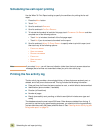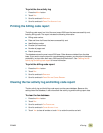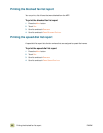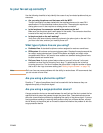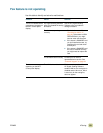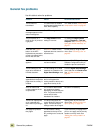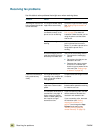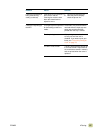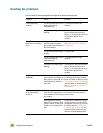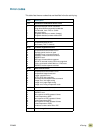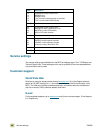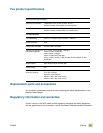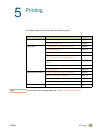
86 Receiving fax problems ENWW
Receiving fax problems
Use this table to solve problems that might occur when receiving faxes.
Problem Cause Solution
Incoming fax calls are not
being answered by the fax
(no fax detected).
The rings-to-answer setting
might not be set correctly.
Check the rings-to-answer setting.
See “Setting rings-to-answer” on
page 70.
The phone cord might not be
connected correctly, or the
phone cord is not working.
See “Connecting the fax to a phone
line” on page 52 to check the
installation. Make sure that you are
using the phone cord that came
with the fax.
The phone line might not be
working.
Disconnect the fax from the phone
jack on the wall and connect a
phone. Try to make a phone call to
verify that the phone line is
working.
A voice-messaging service
might be interfering with the
fax’s ability to answer calls.
Take one of the following actions:
● Discontinue the messaging
service
● Get a phone line that you can
dedicate to fax calls
● Decrease the rings-to-answer
for the fax to a number less
than the rings-to-answer for the
voice mail (see “Setting rings-
to-answer” on page 70)
Faxes are transmitting or
being received very
slowly.
You might be sending or
receiving a very complex fax,
such as one that contains
many graphics.
Complex faxes take longer to send
or receive.
The receiving fax machine
might have a slow modem
speed.
The fax only sends the fax at the
fastest modem speed the receiving
fax machine can use.
The resolution of the sent or
received fax is very high. A
higher resolution typically
results in better quality, but
also requires a longer
transmission time.
If you are receiving a fax, call and
ask the sender to decrease the
resolution and resend the fax.
If you are sending a fax, decrease
the resolution (see “Setting
outgoing fax resolution” on
page 67) and change the Page
Content mode setting (see
“Sending a fax by typing the
number manually” on page 57).



